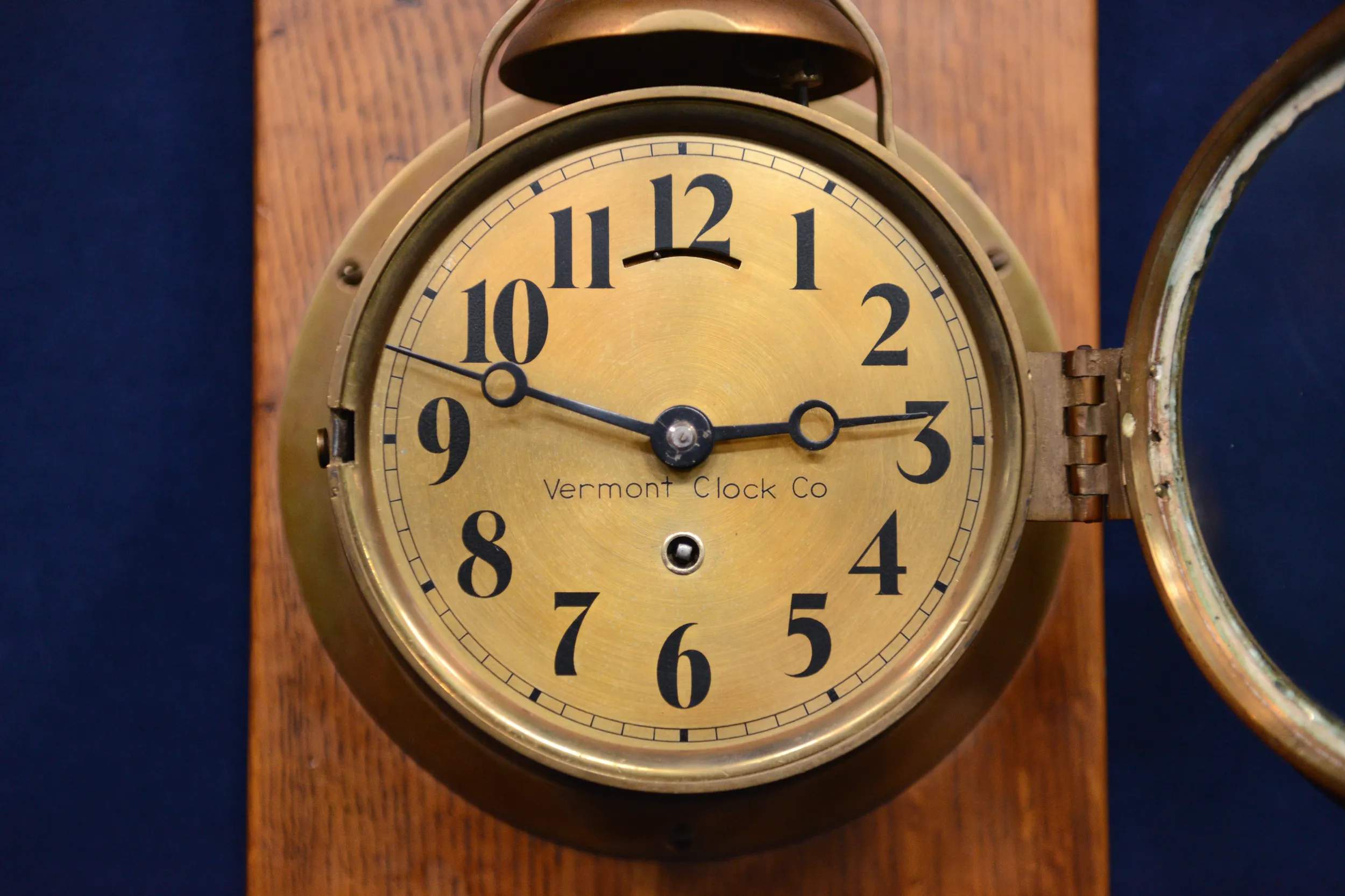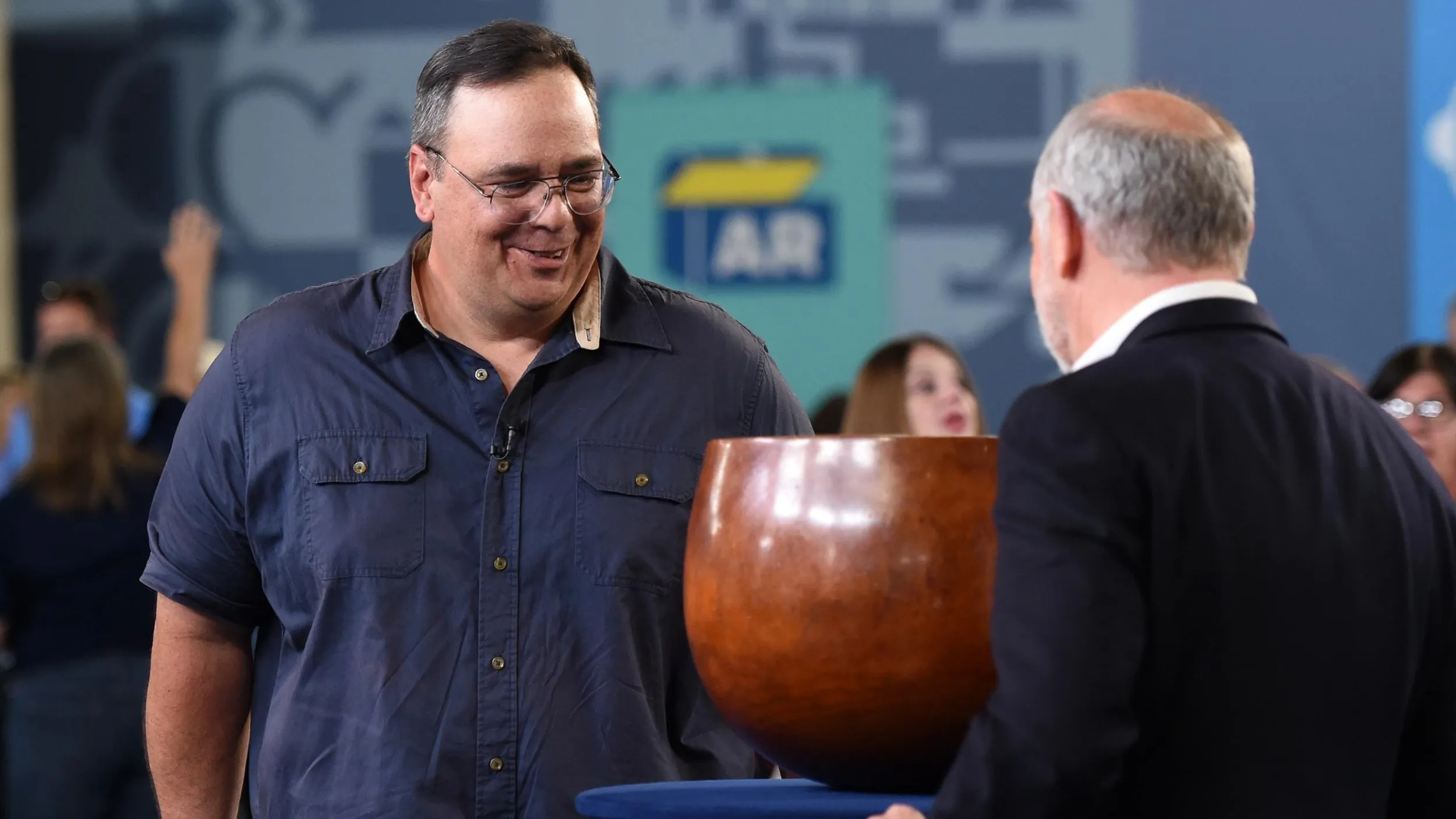GUEST: I brought a ship's bell clock that I believe to have been on the USS Pocahontas. My aunt collected clocks, and this was a clock that she long thought that I should have because my mother was a WAVE in the Navy, and I was, am, a U.S. naval officer. It hangs in my home. It rings the watches of a ship's watch every four hours.
APPRAISER: Uh-huh. And can you explain what that ship's watch system is?
GUEST: So at 4:00, 8:00, 12:00, the ship's bell goes, "ding-ding, ding-ding," and it tells you in a series when the watch is ending and when the next watch is going to be set.
APPRAISER: That's right, so a watch was four hours in the Navy.
GUEST: Correct.
APPRAISER: And in the first hour of the watch, if it started at 12:00, the first half-hour of the watch it would actually strike once at 12:30, and then on the hour, it would strike twice, and then at 1:30, it would strike three times, all the way up to eight, a series of eight, which would be the end of the four hours. So for somebody that's not a naval person or a military person, if they heard this clock strike, they might be a little confused about actually what it was doing.
GUEST: (laughs) They indeed would be confused, and many have been.
APPRAISER: It was made by the Vermont Clock Company. Joseph Eastman is one of the founders of the company, and he has a long history of being involved with a number of clock companies and had a reputation for making fine clocks. This clock was made about 1900. This is really the beginning of when these types of clocks of very, very high quality come into the marketplace.
GUEST: Wow.
APPRAISER: And the Vermont Clock Company was only in business for a couple of years. This clock in their 1900 catalog was actually titled "Our Ship's Clock." It had a jeweled movement. It was made more like a watch than it was like a clock. The plates were damascene, absolutely beautiful. An unusual setup. You'll notice that it is a striking clock, but it only has one winding arbor. That was one of Eastman's features, is it has what we call a tandem wind setup, where when you wound it to the right, it would wind the time train of the clock and it would run for eight days. And then if you wound it to the left, the same winding arbor, it would actually wind the striking portion of the clock. So when most people see this, they think the bell's just a decoration because it only has one winding arbor, and in fact it does have two trains. So because this clock doesn't have a pendulum, you need a way to regulate it, and the way that you regulate a balance wheel clock is typically with a lever adjustment. And this clock has that with this slot right here. If you move it to the left, you'll slow it down; if you move it to the right, you'll actually speed the clock up. The case is made of brass and it's cast, so it's a very, very heavy case, and it's in an old patinated finish. It looks absolutely wonderful.
GUEST: Should I shine it up? I like it the way it is.
APPRAISER: Yeah, being a Navy person, I'm surprised that you don't prefer it shiny. (laughing)
GUEST: I know! There are a lot of Navy people out there who will tell you they spent a lot of time shining the brass...
APPRAIESR: Shining the brass, absolutely. and this wouldn't suffer from that treatment. The Pocahontas was a ship that was used as a troop transport for World War I. Vermont clocks are very, very collectible. This clock in a retail setting, a retail shop, would probably sell in the $3,000 price range.
GUEST: Wow, wow! I am amazed and very pleased.
APPRAISER: There are very few of these known. There's probably less than ten examples known in the marketplace.
GUEST: Oh my gosh!












